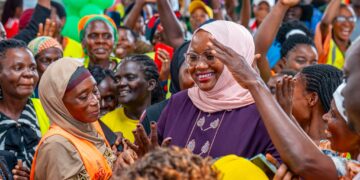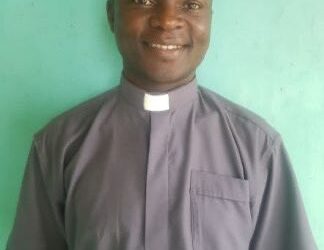By Isaac Tayebwa,
NATIONAL
The government of Uganda ,in February 2020 with an aim of creating and meeting the learner’s needs especially in regards to skills training and enhancement rolled out the lower secondary education curriculum.
Hon. Jannet Museveni while addressing parliament said “the need to review the curriculum was over due since it had not been revisited since the colonial education system was introduced, which was more theoretical than practical. This lead to channeling out of graduates with no practical skills meant for the labour market”.
Mutungi Prince Paul ,a senior four student at Ndejje Secondary school ,Luweero District wishes this curriculum was introduced during their time since it’s more favourable for the students,both the slow and fast learners.
“I would be skilled with at least two vocational skills like carpentry that I see senior two’s and one’s training in,” he explained.
Nabassa Elias a second year education student at Kampala International University is disappointed with the failure of the government to introduce training of the new curriculum to students training to be teachers in higher institutions of learning since this will give them an extra burden of retraining the curriculum after acquiring a bachelor’s degree.
“I agree that the new curriculum creates more sense to the students which has been the cry of every Ugandan that has a sense of loving their country and passion for education,” says Nabassa.
According to him, the methodology of teaching and learning is to the advantage of the student but called for training of teachers for this curriculum since they are the driver and directors of the process. This he says helps learners understand better the content.
Similarly, Amon Tumwehe also a third year student at the same institute argues that it might take long for the curriculum to be fully adopted in the whole of Uganda since most schools lack adequate materials to carry out the practical lessons.
“Research will also be difficult since just a few schools can access internet conveniently living out rural based schools,” he added
Teehee says, “Schools in towns to larger extent lack play grounds to carryout the physical exercises a compulsory requirement of the National Curriculum Centre for every school to adopt for the students.”
Many parents have however expressed excitement noting that implementation of curriculum reform was a dream come true as they were tired of their children coming back home with theoretical knowledge after completing school making it useless to invest in education .
Mary Akello, a mother of four and a fresh fruit vendor at Kasule village, Lukuli Parish , Makindye Division in Kampala district says, “I am glad that the government has finally thought about us .Education was becoming useless as most of us had thought of teaching our children business, give them capital instead of investing in an unfruitful useless education system.”
In a telephone interview with Agaba Robert, the master trainer of the new curriculum and a teacher at Bubaare secondary school he said that the new curriculum was meant to introduce more reliable skilled labor production through teaching of subjects that will not only equip the students with the theories but instead more practical knowledge.
“The new curriculum allows the students to be the most important throughout their life in education, its bassed on what a student can do not what they know.” Agaba said.
“Even after dropping out of school, the students has a starting point since he would have gained some vocational skills like carpentry, hair dressing among others as their compulsory for every student. The students will no longer focus on looking for white collar jobs but instead will use the skills attained in school to find a living thus reducing levels of unemployment and increased crime rates resulting from idleness,” he added.
Furthermore, Agaba made it clear that the new curriculum is more holistic than the old one since the students apply their “hands, heart and head.” This makes the curriculum favourable for all students putting into consideration their differences in ability to grasp content. That teacher in this case becomes the facilitator since his role in this case is to supervise, guide, correct and add more knowledge to the students.
According to the new lower secondary curriculum, every student has an activity of intergration that they have to produce before doing end of S.4 exams which contributes 10% to the final results attained at UNEB .
The student also is suppose to do apractical project that sums upto 10%, living the student working out of 80% per subject at the end of the course .
The new curriculum also has competency based assement where we have high order thinking skills item , one uses the skills of analysis , evaluation and criterion to approach the different tasks a head of them . In each topic , different generic skills are handled for example ability to communicate , think , creativity , collaboration and self-directed learning . This leaves the student as the main actors in the learning and teaching process through diferent class groups that are created with the help of the teacher to ease discussion, engagements , understanding and formulation of the content per subject .
With all the research made ,the biggest percentage of the people interviewed were hoping for positive results out the curriculum since it anable the students acquire more skill.






































